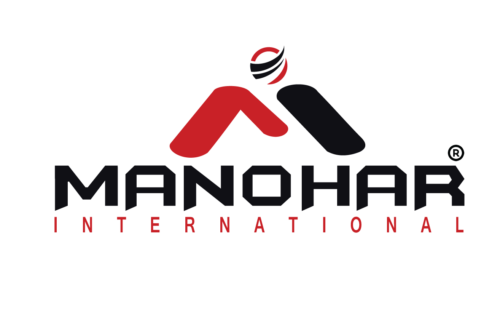Revolutionizing Healthcare: The Impact of Technology on Disposable Plastic Aprons in India
The Indian healthcare industry has undergone remarkable transformation over the past decade, driven by advancements in technology, increased awareness of hygiene standards, and a growing demand for cost-effective medical supplies. Among the many innovations, the evolution of disposable plastic aprons stands out as a critical development, enhancing safety and efficiency in healthcare settings. These aprons, once seen as simple protective barriers, have now become sophisticated tools integrated with cutting-edge technology, catering to the needs of hospitals, clinics, and even home healthcare providers across India.
The Role of Disposable Plastic Aprons in Healthcare
Disposable plastic aprons are essential in maintaining a sterile environment, protecting healthcare workers and patients from cross-contamination, bodily fluids, and infectious agents. In a country like India, where the healthcare sector serves a vast and diverse population, the demand for reliable, affordable, and high-quality protective gear is immense. Traditionally, these aprons were basic polyethylene sheets designed for single use. However, with rising healthcare challenges—such as pandemics, antibiotic-resistant infections, and stricter regulatory standards—technology has stepped in to revolutionize their design, production, and functionality.
Technological Advancements in Design and Materials
One of the most significant upgrades in disposable plastic aprons is the shift in materials and manufacturing processes. Early versions were made from low-density polyethylene (LDPE), which offered basic protection but lacked durability and comfort. Today, manufacturers are incorporating advanced polymers like high-density polyethylene (HDPE) and polypropylene blends, which provide enhanced strength, tear resistance, and breathability. These materials ensure that aprons can withstand rigorous use while remaining lightweight—a crucial factor for healthcare workers who wear them for extended periods.
Additionally, nanotechnology has entered the scene, enabling the development of aprons with antimicrobial coatings. These coatings, often infused with silver nanoparticles or other biocidal agents, actively kill bacteria and viruses upon contact, reducing the risk of infection transmission. This is particularly beneficial in India, where crowded hospitals and limited resources can amplify infection risks. Such innovations reflect how technology is elevating the humble plastic apron into a proactive shield rather than a passive barrier.
Automation and Precision in Manufacturing
The production process of disposable plastic aprons has also seen a technological overhaul. Modern manufacturing units in India are increasingly adopting automation and robotics to ensure precision and scalability. Automated cutting, sealing, and folding machines have replaced manual labor in many facilities, resulting in consistent quality and reduced production time. This is a boon for Plastic Apron Manufacturers in India, who are now able to meet bulk orders from both domestic and international markets without compromising on standards.
Furthermore, the integration of IoT (Internet of Things) in manufacturing allows real-time monitoring of production lines. Sensors track material usage, detect defects, and optimize energy consumption, making the process more sustainable. For Plastic Apron Suppliers in India, this means faster delivery times and the ability to cater to urgent demands, such as those seen during the COVID-19 pandemic, when the need for personal protective equipment (PPE) skyrocketed.
Sustainability: A Growing Focus
As environmental concerns gain traction globally, the Indian healthcare industry is under pressure to adopt eco-friendly practices. Disposable plastic aprons, while essential, contribute to medical waste—a challenge that technology is now addressing. Biodegradable plastic aprons, made from plant-based polymers like polylactic acid (PLA), are emerging as a sustainable alternative. These aprons decompose naturally over time, reducing the environmental footprint of healthcare facilities. Additionally, some manufacturers are experimenting with recycling programs, where used aprons are collected, sterilized, and repurposed into non-medical products.
Customization and Ergonomics
Another area of up-gradation is the customization of aprons to suit specific healthcare needs. Advanced design software allows manufacturers to create aprons tailored to different medical procedures—be it surgery, pathology, or general patient care. Features like adjustable neck straps, thumb loops, and perforated tear-off sections enhance usability and comfort. These ergonomic improvements ensure that healthcare workers can focus on their tasks without being hindered by ill-fitting or cumbersome gear.
Export Potential and Global Standards
India’s reputation as a hub for medical supplies is growing, and disposable plastic aprons are no exception. Plastic Apron Exporters in India are leveraging these technological advancements to meet international standards, such as ISO 13485 (for medical device quality management) and CE marking (for European markets). By incorporating features like fluid resistance, anti-static properties, and compliance with ASTM standards, Indian exporters are positioning themselves as competitive players in the global market. This not only boosts the economy but also showcases India’s ability to innovate in healthcare technology.
Challenges and the Road Ahead
Despite these advancements, challenges remain. High initial costs for adopting new technologies can deter small-scale manufacturers. Additionally, ensuring widespread awareness and adoption of upgraded aprons in rural healthcare settings is a hurdle, given the price sensitivity in these regions. Government support through subsidies, training programs, and stricter enforcement of quality standards could bridge this gap.
Looking ahead, the future of disposable plastic aprons in India’s healthcare industry is promising. Emerging technologies like 3D printing could enable on-demand production of aprons in remote areas, while AI-driven quality control could further enhance manufacturing precision. As the industry continues to evolve, collaboration between manufacturers, healthcare providers, and policymakers will be key to sustaining this momentum.
Conclusion
The technology up-gradation in disposable plastic aprons reflects India’s broader journey toward a modern, resilient healthcare ecosystem. From antimicrobial coatings to sustainable materials, these innovations are redefining safety and efficiency in medical settings. For manufacturers, suppliers, and exporters, embracing these advancements is not just a competitive edge—it’s a commitment to safeguarding lives. As India continues to strengthen its position in the global healthcare market, the humble plastic apron stands as a testament to the power of technology in transforming even the simplest tools into indispensable assets.

